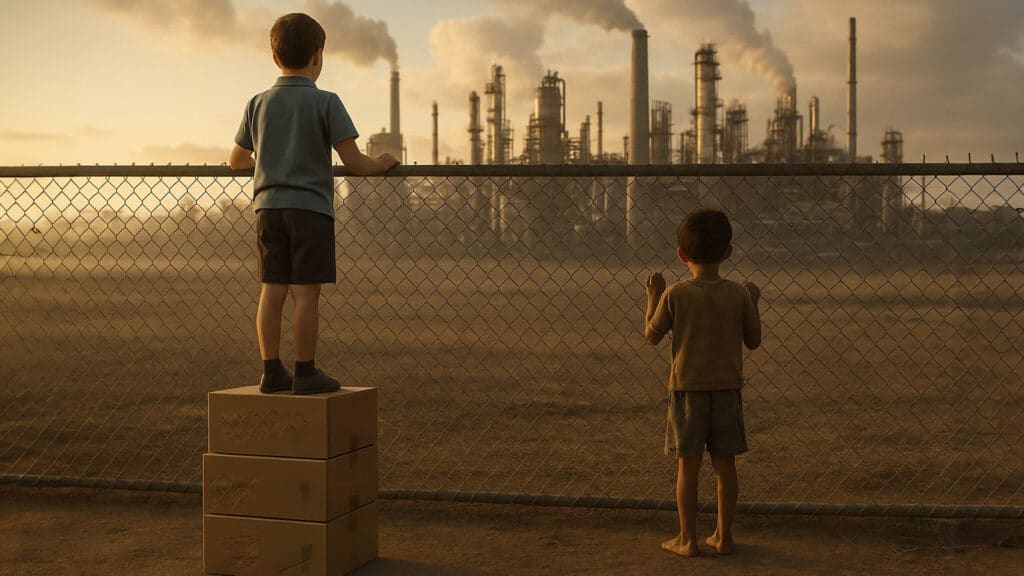
Developed countries not only intervene in the progress of specific economic sectors, but they also do so more actively than developing nations. Moreover, they tend to support established industries with strong export potential.
These conclusions are based on a recent study that measured industrial policy through the analysis of a large corpus of text-based data. The research was conducted by economist Réka Juhász of the University of British Columbia, along with Nathan Lane, Emily Oehlsen and Veronica Perez of Oxford University and Boston University. Kursiv Research has previously referenced their work when highlighting the shift in mainstream economic thought — from viewing industrial policy negatively to seeing it in a more neutral light. Two years later, economists have taken their analysis even further.
What is industrial policy?
Industrial policy refers to government efforts to shape the economy by supporting specific industries, enterprises or types of economic activity. This support can take the form of subsidies, tax incentives, infrastructure development, regulatory protections and funding for research and development (R&D), according to definitions published by the International Monetary Fund (IMF).
Despite the term «industrial,» the scope of such policy goes beyond manufacturing. It often includes emerging sectors and industries that generate high-value-added goods and services, especially those new to a country’s economy.
For decades, economists debated the effectiveness of industrial policy, arguing that governments and bureaucrats are less efficient than markets in allocating resources. However, as empirical data mounted, those views began to shift. By the late 2010s, even mainstream economists had to acknowledge that «green transition» strategies widely used in developed nations essentially were industrial policies. Then came new buzzwords like «reshoring,» «onshoring» and «friendshoring,» followed by pandemic-era restrictions and stimulus programs. The pace of change accelerated so rapidly that critics of industrial policy were increasingly drowned out.
AI-powered research unveils global trends
Meanwhile, industrial policy researchers took a new leap, applying AI to study vast troves of economic data. Juhász and her team relied on the Global Trade Alert database, the world’s most comprehensive source of state-level trade policy documents. They trained two models, including a large language model (LLM), to identify, classify and analyze policies, along with their mechanisms and direction.
Their work uncovered approximately 47,000 industrial policy measures implemented between 2010 and 2022.
The research aimed to answer key questions:
- How widespread is the use of industrial policy?
- How is it implemented?
- Which economies use it most actively?
- Which sectors are most frequently targeted?
Some of the answers may surprise veteran proponents of free-market economics.
For at least five years since the COVID-19 pandemic — and arguably since the start of the U.S.-China trade war during Donald Trump’s first term — there has been little debate about the resurgence of industrial policy. The shift is no longer in question.
Juhász and her colleagues confirm this trend with data: between 2010 and 2022, the number of recorded industrial policy measures increased thirtyfold. Subsidies and export financing were used more frequently than traditional tools such as import tariffs.
Perhaps the most striking finding is that developed countries employ industrial policies far more aggressively than developing nations. When researchers sorted countries by income level, they found that economies in the top 20% implemented industrial policy measures five to 15 times more often than those in the bottom 20%. Overall, wealthy nations were disproportionately active in deploying such policies.
The reason is straightforward — only rich countries can afford expensive tools like subsidies and export credit programs.
Another key takeaway is that industrial policies tend to target established sectors rather than emerging ones, i.e. support was directed toward sectors that already had proven competitive advantages. These industries received funding to expand into foreign markets and strengthen their global position.
It’s not hard to follow the logic: subsidies and financing make strong industries in rich countries even more dominant. These sectors, in turn, drive broader economic growth and sustain high standards of living. Poorer countries, by contrast, often lack the fiscal capacity to compete on this playing field.
Essentially, this is one way wealthy nations stay wealthy, while poorer countries struggle to catch up.
For policymakers in Kazakhstan, the study offers at least one sobering but essential insight: effective industrial policy requires substantial financial resources. A developing country can attempt to pursue industrial policy, much like following a «healthy diet,» but in practice, it often ends up being lean, undernourishing and ultimately unproductive.
To change that, Kazakhstan needs a reformed tax and budget framework that supports industrial development, as well as a more balanced and robust public finance system overall.













